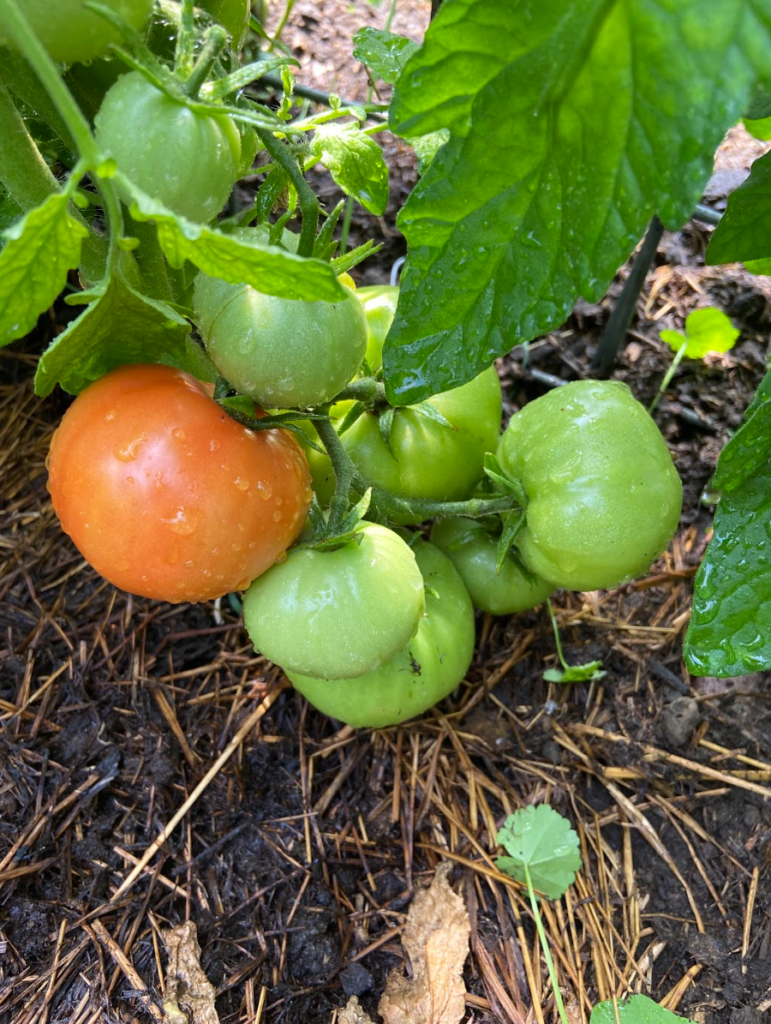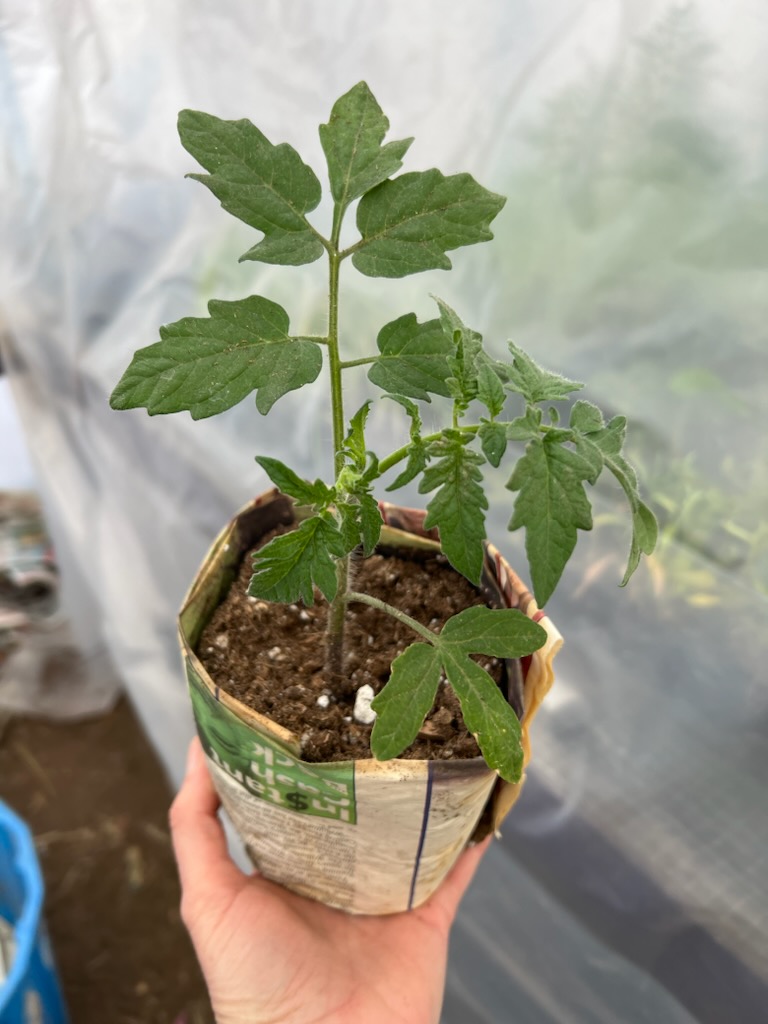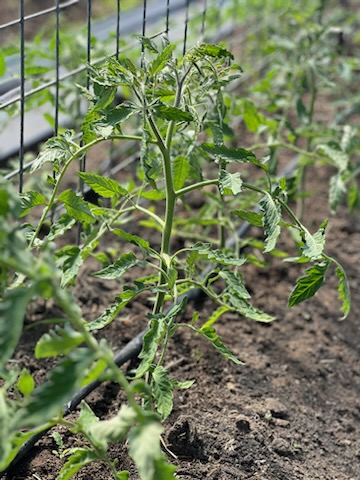Tomatoes are a garden vegetable that is very sensitive to the cold. Therefore, growing tomatoes in cooler climates can be a little more tricky than growing them in warmer climates. With 20 years of gardening experience in British Columbia in USDA Garden Zone 3, I have learned some tricks to grow tomatoes in cooler temperatures. It can be challenging, but it is not impossible when using the proper techniques and varieties.
If you are a tomato lover who is struggling to grow tomatoes in your area because your growing season is too short or the weather is too cold at night, keep reading to hear about how I have successfully grown tomatoes in Zone 3.
What Varieties to Grow
Before heading to the store or greenhouse to buy the tomato seeds or seedlings, research; let’s talk about different varieties that are good for short growing seasons in cool weather areas. When looking for a variety to grow, you will want to look for specific breeds bred for cold temperatures and have a shorter growing period.
Some of my favorite tomato plants to grow are:
- Manitoba Bush
- Stupice
- Old German
- Beefsteak
- Sungold
I successfully grow each of these tomato varieties up here in the cool climates of Zone 3. Head over to the blog I wrote about the best tomato plants for short growing seasons to dive a little more in-depth into choosing varieties that are right for you.

Starting Seeds Indoors

Generally speaking, when you live in a cold climate, it is essential that you start your seeds indoors. Doing this will give your plants a better chance of survival with a good crop. This helps ensure they are strong and healthy before being transplanted into the ground.
- Start your seeds indoors 6-8 weeks before your last frost date. If you need help finding your last frost date, you can look it up by simply googling it.
- When starting your seeds, be sure to use appropriately sized seed-starting trays or pots with a high-quality seed-starting mix.
- Fill your pots with moist soil, then sow the seeds 1/4 inch deep. Be sure your soil remains damp but not waterlogged.
- Place your planted seed trays and pots in a warm area that is around 70-75 degrees Fahrenheit (21-24°C). This helps ensure the optimal soil temperature for germination.
- When the seeds begin germinating, you will need to invest in some grow lights to provide your seedlings with 14-16 hours of light.
Hardening off Seedlings
Whether you get your young tomato plants from a greenhouse or you grow them yourself, you will need to take them through the hardening-off process. During this process, you slowly acclimate the seedlings to the outdoor weather conditions, such as wind, rain, hot midday temperatures, and direct sunlight.
I have a step-by-step guide for the best way to harden off seedlings. You can find it here.
Preparing the Garden Beds
The next steps to ensuring a bountiful harvest in lower temperature areas is the proper preparation of the garden. This applies to inground gardens, raised bed gardens, and gardens within a high tunnel.
Be sure that your garden location will receive 6-8 hours of direct sunlight daily.
Prep the soil to ensure that it is well-draining and rich with organic matter. Organic matter can be aged compost or aged manure and is essential for ideal soil conditions.
Using raised garden beds can be beneficial since the dirt in them will warm up earlier than the dirt in the inground garden.

Transplanting Your Tomato Seedlings
When you think you have passed your last frost date, generally around the end of May, you can begin to transplant your tomatoes. I plant my tomatoes in a high tunnel. The purpose of the high tunnel is to extend the growing season by keeping the air and soil within it warmer. I have rows within the high tunnel that are mounded up. This allows for the mounds to drain more easily.
When planting the tomato plants:
- Plant them 18-24″ apart
- Bury the stem up to the first set of true leaves. Tomato stems can sprout new roots, allowing them to absorb new nutrients, resulting in a more robust plant and larger harvest.
- Once transplanted, ensure the soil is watered thoroughly and remains moist but not waterlogged.
Protecting Your Tomato from the Cold
When living in cold weather areas, there is always a chance that your nighttime temperatures will drop, resulting in a frost warning. If this happens, you will want to give your tomato plants an extra layer of protection to protect them from the danger of frost. The low temperatures generally occur during the night. A great way to provide your plants with extra protection from the overnight temperatures is by use of row covers such as a frost cloth or old sheets.
Another way that you can grow tomatoes is by use of a cold frame. Usually, cold frames are seen in a raised garden bed. A cold frame is almost like a greenhouse, where the top of it is typically a window, and the plants are enclosed on all sides by the frame.
Mulching the base of your plants can help keep the soil temperature warm and moist. Mulch is a great way to retain water in the soil. Be careful not to mulch up the stem, as it will cause it to rot.
A significant reason that we protect our plants from the cold is the prevention of blossom drop. Blossom drop is when the plants produce flowers but do not produce fruit. Exposure to too much cold is one of the biggest causes of blossom drop. When the temperature is too cold, the insects stay hidden and do not pollinate.
Lastly, you will want to be sure that your tomato plants have green tomatoes on them and that a frost is in the forecast that you cover your tomato plants. Once the tomatoes are exposed to frost, it is recommended that you do not process them using a canning method.

Managing the Light and Temperature
If you live in a short growing season that has an early first frost date, you will most likely need some sort of season extender for your tomato plants. One way to extend your growing season is by using high tunnels and greenhouses. When using a high tunnel or a greenhouse, you are more easily able to control the heat of the area, resulting in the ideal temperature for growing. These two options also allow for the tomato plants to absorb the natural light.
Watering and Feeding
Proper watering and feeding are essential for healthy tomato plants, especially in cold climates where growth may be slower. Follow these guidelines:
Water deeply and consistently, keeping the soil evenly moist. Avoid overhead watering to reduce the risk of fungal diseases. Try to aim the water at the base of the plant when watering.
When warranted, use a balanced fertilizer or compost tea every 2-4 weeks to provide essential nutrients. Avoid excessive nitrogen, which can lead to lush foliage but fewer fruits. Some of my favorite fertilizers are fish emulsion and Gaia Green All Purpose.
Pruning and Staking
Pruning and staking your tomato plants can help improve air circulation, reduce disease risk, and support heavy fruit loads. Here’s how:
- Pruning your tomato plants:
- Remove the lower leaves that touch the ground
- Remove the suckers to promote better air circulation and focus energy on fruit production. Suckers are side shoots that grow at a 45-degree angle between the main stem and the branches of the plant.
- Supporting the tomato plants:
- By using tomato cages, trellis, or steak. Our personal favorite way to support your tomato plants is by a trellis. We use t-posts and cattle panels as support. Pound the t-post into the ground, then attach a cattle panel to it. As the tomato plants grow, we use a soft string or material to attach the plant to the utility panel.
Pest and Disease Control
Just because you live in a cold climate doesn’t mean your tomato plants are not susceptible to pests and diseases, so regular monitoring is essential. Common issues include:
- Blight: Watch for signs of blight, such as yellowing leaves and dark spots. Remove affected foliage and use fungicides if necessary.
- Aphids and Whiteflies: Inspect plants regularly for aphids and whiteflies. Use insecticidal soap or neem oil to control infestations.
- Slugs and Snails: Use organic slug pellets or traps to protect young plants from these pests.

Conclusion
Growing tomatoes in cold climates requires extra effort, but the rewards are well worth it. You can enjoy a successful tomato harvest even in cooler regions by choosing suitable varieties, starting seeds indoors, protecting plants from cold, and providing proper care. Happy gardening!
Feel free to leave any questions or share your experiences in the comments below. We’d love to hear from other tomato growers and support your tomato-growing journey in cold climates.
**Disclaimer: This post contains affiliate links. I will earn a small commission from any purchases bought through these links.



